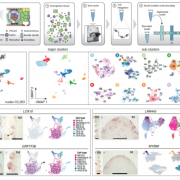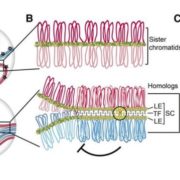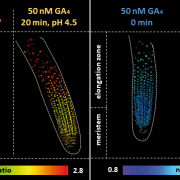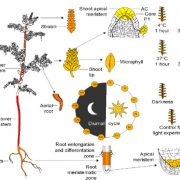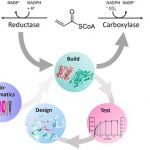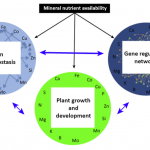Review: Crop breeding technologies to feed the world (Nature Biotech)
 The world demands food, plant scientists and breeders have the challenge of feeding a growing population. In a recent review Hickey et al. summarize the state-of-the-art technologies used for crop improvement. In use since 2003, ‘speed breeding’ is a set of improved methods for fast-tracking plant life cycle, using optimal light quality, light intensity, day length, and temperature to accelerate photosynthesis and flowering. Now, so-called ’speed breeding 2.0’ technologies can further increase this speed, with the acceleration of seed germination, early harvesting, and shortening the transition to flowering. Scientists are also working in improving phenotyping, which is the basis for selecting lines and central activity in plant breeding. Breeders can now ’see’ the plants with computer vision and measure more features; machine learning approaches allow them to process and analyze information in an unprecedented manner. Recent gene editing technologies can be directly integrated into the speed breeding system (i.e. ExpressEdit), avoiding in vitro manipulation of plants. Novel technologies allow the delivery of preassembled Cas9–sgRNA ribonucleoproteins into meristems tissues to generate gene edits without the use of exogenous DNA. The use of wild species is an alternative to generate modern cultivars. Current genome editing technologies can be applied to target domestication-related genes in wild species and allow accelerated domestication. The combination of all these technologies is helping plant scientists to face the challenge of feeding 10 billion. (Summary by Humberto Herrera-Ubaldo) Nature Biotech. 10.1038/s41587-019-0152-9
The world demands food, plant scientists and breeders have the challenge of feeding a growing population. In a recent review Hickey et al. summarize the state-of-the-art technologies used for crop improvement. In use since 2003, ‘speed breeding’ is a set of improved methods for fast-tracking plant life cycle, using optimal light quality, light intensity, day length, and temperature to accelerate photosynthesis and flowering. Now, so-called ’speed breeding 2.0’ technologies can further increase this speed, with the acceleration of seed germination, early harvesting, and shortening the transition to flowering. Scientists are also working in improving phenotyping, which is the basis for selecting lines and central activity in plant breeding. Breeders can now ’see’ the plants with computer vision and measure more features; machine learning approaches allow them to process and analyze information in an unprecedented manner. Recent gene editing technologies can be directly integrated into the speed breeding system (i.e. ExpressEdit), avoiding in vitro manipulation of plants. Novel technologies allow the delivery of preassembled Cas9–sgRNA ribonucleoproteins into meristems tissues to generate gene edits without the use of exogenous DNA. The use of wild species is an alternative to generate modern cultivars. Current genome editing technologies can be applied to target domestication-related genes in wild species and allow accelerated domestication. The combination of all these technologies is helping plant scientists to face the challenge of feeding 10 billion. (Summary by Humberto Herrera-Ubaldo) Nature Biotech. 10.1038/s41587-019-0152-9


